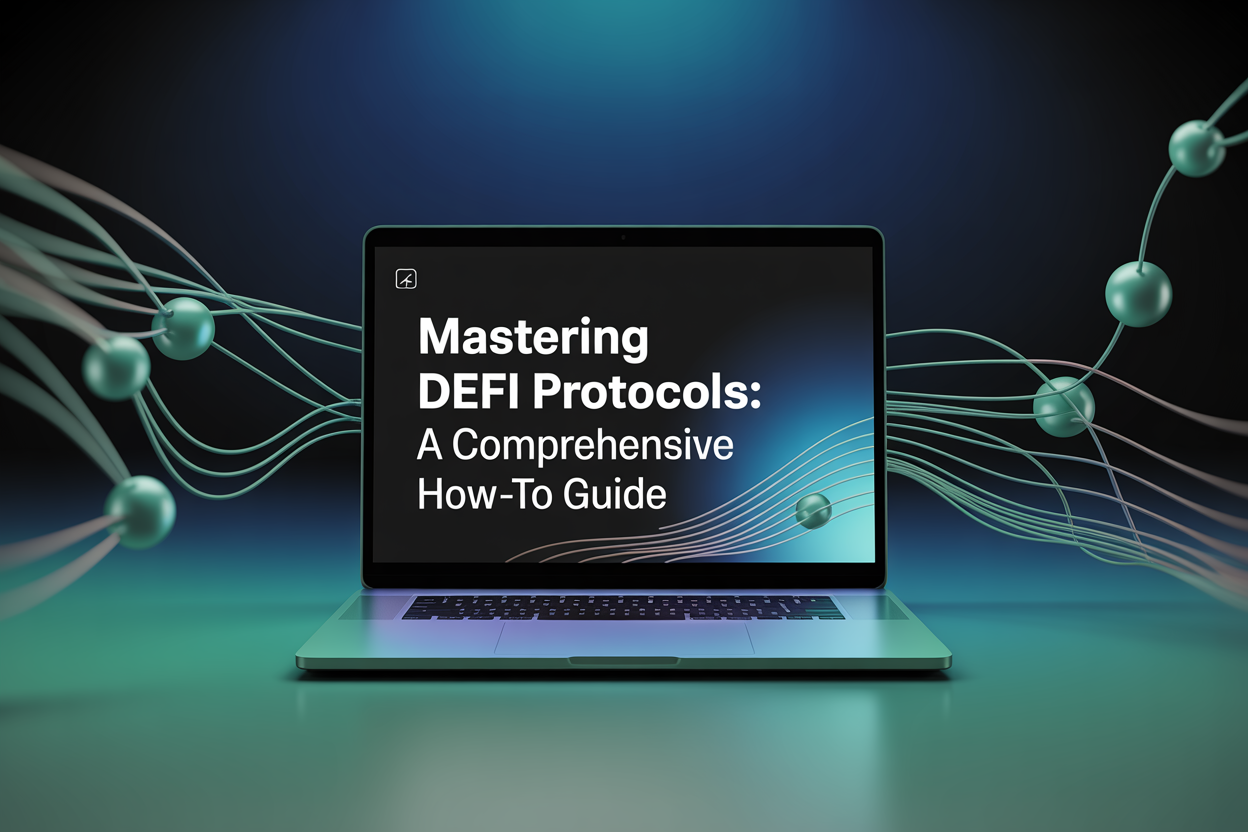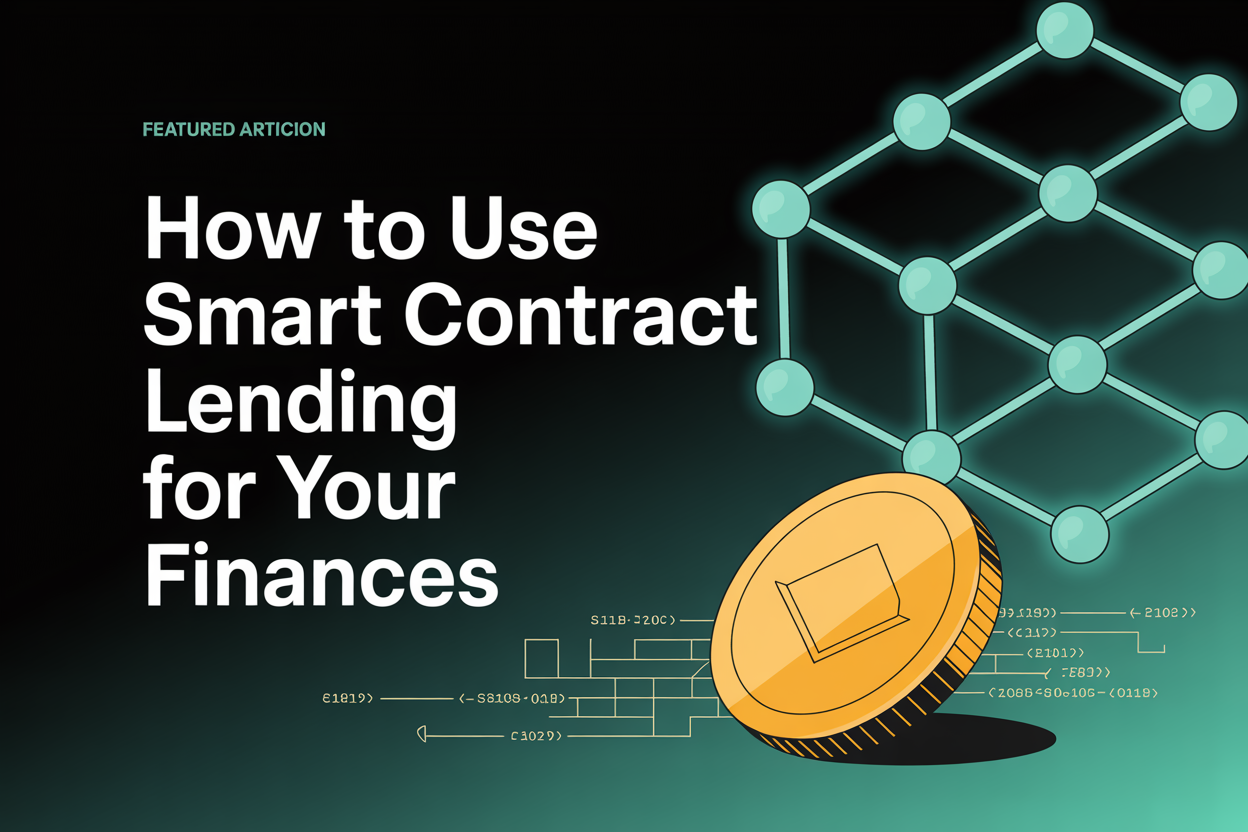Now Reading: Mastering DeFi Protocols: A Comprehensive How-to Guide
- 01
Mastering DeFi Protocols: A Comprehensive How-to Guide
Mastering DeFi Protocols: A Comprehensive How-to Guide

The world of decentralized finance is changing fast. It’s key to know about DeFi protocols to move through this new financial world.
DeFi protocols are the core of the DeFi world. They help make decentralized apps and services.

As the DeFi world grows, knowing how to use DeFi protocols well is vital.
Key Takeaways
- Understanding the basics of DeFi protocols
- Learning key tools for the DeFi world
- Step-by-step guides to DeFi apps
- Ways to use DeFi protocols effectively
- Best practices for the DeFi landscape
The Fundamentals of Decentralized Finance
DeFi is about making finance more open and accessible with blockchain. It lets people do financial transactions without banks.
What Makes DeFi Different from Traditional Finance
DeFi uses decentralized networks for permissionless access to finance. This is different from traditional finance, which often limits access based on where you are or who you are.
The Core Principles Behind Decentralized Networks
DeFi is built on permissionless access, trustless transactions, and transparency and immutability. These are key to understanding DeFi.
Permissionless Access
Anyone with internet can join DeFi, no matter where they are or their financial status. This openness is thanks to blockchain.
Trustless Transactions
Smart contracts make transactions happen without middlemen. This makes things more efficient and cuts down fraud risk.
Transparency and Immutability
All DeFi transactions are on a public ledger. This means they are transparent and immutable. It builds trust in the DeFi community.
Knowing these basics is key to getting into DeFi. As DeFi grows, we’ll see new standards and solutions.
Essential Tools for DeFi Success
To succeed in DeFi, you need the right tools. Understanding and setting up key tools is the first step. These tools help you interact safely and efficiently with DeFi protocols.
Setting Up a Secure Crypto Wallet
A crypto wallet is your entry into DeFi. It’s important to pick a wallet that’s both safe and easy to use. You can choose between hardware and software wallets.
Hardware vs. Software Wallet Options
Hardware wallets are physical devices that keep your private keys safe offline. They offer strong security against hackers. Ledger and Trezor are popular choices.
Software wallets, on the other hand, are apps for your computer or phone. They’re convenient but might be more at risk from cyber threats. MetaMask and Trust Wallet are examples.
Securing Your Private Keys
Keeping your private keys safe is crucial, no matter the wallet type. Never share your private keys with anyone. Using a hardware wallet adds extra security. Also, enable two-factor authentication (2FA) to protect your assets.
Connecting to DeFi Platforms Safely
When accessing top DeFi platforms, make sure your internet connection is secure. Always check the URL to avoid scams. Using a trusted DeFi aggregator can help find best DeFi projects safely.
Security Practices to Protect Your Assets
Strong security practices are essential. Keep your software up to date, use strong passwords, and be wary of unsolicited advice. Being proactive and informed can greatly reduce DeFi risks in various DeFi protocols.
Getting Started with DeFi: Your First Steps
Starting your DeFi journey means learning the basics first. You need to understand the foundational steps to move forward.
How to Acquire and Manage Cryptocurrency
To begin with DeFi, you must first get cryptocurrency. You can buy it on exchanges like Coinbase or Binance. Look for Ethereum (ETH) or Bitcoin (BTC). After buying, keep your crypto safe in a wallet.
Understanding Gas Fees and Network Costs
When you use DeFi, you’ll face gas fees. These are costs for transactions on networks like Ethereum. Knowing about gas fees helps you save money.
Navigating User Interfaces of Popular Platforms
Platforms like Uniswap and Compound have complex interfaces. Getting used to these is essential for using DeFi well.
MetaMask Configuration
MetaMask is a browser extension for DeFi. It lets you connect to DeFi platforms from your browser. Setting up MetaMask means creating a wallet and linking it to platforms.
Web3 Browser Extensions
Extensions like MetaMask make using blockchain apps easy. Knowing how to use them is crucial for exploring DeFi.

Understanding Major DeFi Protocols and Their Functions
DeFi is growing, and knowing the main protocols is key. The DeFi world has many tools, like lending, borrowing, trading, and yield farming.
Lending and Borrowing Platforms
Lending and borrowing are core in DeFi. They let users lend to earn or borrow for needs. Aave and Compound lead in this area.
Aave and Compound Basics
Aave lets users earn interest on deposits and borrow assets. Compound also lets users supply assets for interest. Both are big in DeFi.
Decentralized Exchanges (DEXs)
DEXs let users trade cryptocurrencies without a middleman. Uniswap, SushiSwap, and Curve are top DEXs in DeFi.
Uniswap, SushiSwap, and Curve
Uniswap is a top DEX for swapping ERC-20 tokens. SushiSwap, a Uniswap fork, adds yield farming. Curve focuses on stablecoin trades, offering low fees.
Yield Farming Opportunities
Yield farming means providing liquidity for rewards. Yearn Finance and Harvest are big in this field.
Yearn Finance and Harvest
Yearn Finance automates yield farming. Harvest lets users deposit for returns. Both are favorites for high returns in DeFi.
DeFi offers many financial services and chances. Knowing these protocols helps use DeFi well.
How to Evaluate DeFi Projects Before Investing
Before you start with DeFi, it’s key to know how to check DeFi projects. This process has several steps. They help investors make smart choices and avoid risks.
Analyzing Protocol Security and Audit Reports
Checking a project’s security is very important. Look at audit reports from trusted firms to spot risks. Choose projects with solid security audits and plans to fix any problems.
Assessing Team Credibility and Community Support
The team behind a project and its community are key signs of success. Check the team’s background and experience. A lively community shows a project is well-supported.
Understanding Tokenomics and Incentive Structures
Tokenomics is crucial for a DeFi project’s success. It’s about the token distribution models, emission schedules, and their impact on the project.
Token Distribution Models
A fair token distribution model is vital. Be cautious of centralized token distribution as it can be easily manipulated.
Emission Schedules and Inflation
It’s important to understand a project’s emission schedule and its effect on inflation. A good schedule helps keep the token’s value. A bad one can cause inflation and lower value. For more info, check this guide on analyzing DeFi projects.
By looking at these points, investors can make better choices. This helps them pick the best DeFi projects to invest in. Remember, DeFi token standards are also important.
Step-by-Step Guide to Lending in DeFi
Lending in DeFi changes how we see banking and investing. It lets people lend assets and earn interest without banks.
Selecting the Right Lending Platform
Choosing a DeFi lending platform is key. Look at security, interest rates, and the platform’s reputation. Top platforms include Compound, Aave, and MakerDAO.
- Check the platform’s security and audit reports.
- Compare interest rates on different platforms.
- See how easy the platform is to use and its customer support.
How to Deposit Assets and Earn Interest
Putting assets into a DeFi platform is easy. First, link your wallet. Then, deposit your assets and start earning interest.
- Go to the platform’s website and connect your wallet.
- Pick the asset to deposit and confirm.
- Watch your interest grow and adjust your deposits as you like.
Managing Risks in Lending Markets
It’s important to manage risks in DeFi lending. Two main risks are collateralization ratios and liquidation risks.
Collateralization Ratios
A collateralization ratio shows how much you’ve borrowed compared to your collateral’s value. A higher ratio means a riskier loan.
Liquidation Risks
Liquidation risks happen when your collateral’s value drops too low. This can lead to your loan being sold. Knowing these risks helps you make better choices.
Mastering Decentralized Exchanges
Learning about decentralized exchanges is key for those new to DeFi. These exchanges let users trade assets directly from their wallets. This means no need for middlemen.
How to Execute Trades on Popular DEXs
To trade on DEXs, first connect your wallet to the platform. Then, pick the assets you want to trade. Sites like Uniswap and SushiSwap make this easy.
Here’s how to trade:
- Connect your wallet to the DEX.
- Pick the assets you want to trade.
- Decide on the order type (like market or limit).
- Confirm the trade and pay gas fees.
Limit Orders vs. Market Orders
Knowing the difference between limit and market orders is important. A limit order sets a specific price. A market order trades at the current price.
Understanding Liquidity Pools and Impermanent Loss
Liquidity pools are vital for DEXs. They provide the needed liquidity for trading. But, they can lead to impermanent loss. This is when the value of your assets changes compared to the market.
Advanced Trading Strategies on DEXs
Advanced traders use various strategies on DEXs. For example, range orders on Uniswap V3. Range orders let you set a price range for trades. This gives you more control.
Range Orders on Uniswap V3
Uniswap V3 introduced range orders. This lets users focus their liquidity in specific price ranges. It makes trading more efficient and allows for complex strategies.
Yield Farming Strategies for Different Experience Levels
Yield farming is key in the DeFi world, helping users earn more. It’s vital for both new and seasoned users to grasp yield farming strategies.
Finding and Evaluating Farming Opportunities
Finding good farming spots is crucial. Look into popular DeFi protocols and their yields. Check the protocol’s security, the team, and community support.
Also, weigh the risks and rewards. Know the tokenomics and the risk of impermanent loss in pools.
Setting Up Your First Yield Farm
Starting your first yield farm is easy once you know the basics. Choose a reliable platform and link your crypto wallet. Make sure you have the right assets.
Single-Asset vs. LP Token Farming
Choose between single-asset and LP token farming. Single-asset farming stakes one asset. LP token farming involves a pool of two assets.
LP token farming might give higher yields but also risks. Think about these when picking your strategy.
Optimizing Returns and Managing Risks
To boost yields, adjust your strategies with market changes. This might mean switching protocols or changing your assets.
Compounding Strategies
Compounding strategies can greatly increase earnings. Reinvesting your gains can lead to big returns. But, remember the gas fees and risks.
Navigating DeFi Protocols Across Different Blockchains
DeFi protocols are now found on many blockchains, not just one. This growth has made the DeFi world more diverse. It gives users lots of chances to explore different blockchain ecosystems.
Ethereum-Based DeFi Protocols
Ethereum is a big player in DeFi, with many protocols. Decentralized exchanges (DEXs), lending platforms, and yield farming are popular here. Its strong ecosystem and lots of liquidity make it a key place for DeFi innovation.

Layer2 Solutions and Sidechains
Layer2 solutions and sidechains are new answers to Ethereum’s scaling problems. They aim to make transactions faster and cheaper.
Polygon, Arbitrum, and Optimism
Polygon, Arbitrum, and Optimism are well-known layer2 solutions. They help make DeFi faster and cheaper. For example, Polygon is loved for its work with Ethereum.
Alternative Blockchain DeFi Ecosystems
Other blockchains are also building their DeFi worlds. These networks bring their own special features and chances.
Solana, Avalanche, and Binance Smart Chain
Solana, Avalanche, and Binance Smart Chain are big names in this space. They offer fast transactions and lower costs than Ethereum. This draws DeFi projects and users to them.
Knowing about these different blockchain worlds is key to exploring DeFi. By using many blockchains, users can find the best opportunities for themselves.
How to Participate in Decentralized Governance
DeFi is growing fast, and knowing about decentralized governance is key. It lets people help decide how DeFi protocols grow. This way, DeFi stays true to its community roots and keeps up with market changes.
Acquiring and Using Governance Tokens
To join in, you first need to get governance tokens from a DeFi protocol. You can find these tokens on decentralized exchanges (DEXs) or other places where you can buy crypto.
After getting them, you can vote on big decisions for the protocol’s future.
Voting on Protocol Changes and Proposals
Voting is a big deal in decentralized governance. It lets token holders help decide what DeFi protocols will be like. You vote on proposals using your tokens.
How much your vote counts depends on how many tokens you have.
On-Chain vs. Off-Chain Governance
There are two main ways to govern in DeFi: on-chain and off-chain. On-chain means voting directly on the blockchain. This makes decisions clear and safe from tampering.
Off-chain governance, however, votes happen outside the blockchain. This can be through snapshot voting or other methods.
Contributing to DAO Development
Many DeFi protocols are run by Decentralized Autonomous Organizations (DAOs). DAOs need community help to grow and make decisions.
You can help by suggesting new ideas, voting on proposals, and joining in on discussions about improving the protocol.
Risk Management in the DeFi Space
Managing risks well is key to success in DeFi. As DeFi grows, it brings new challenges and risks. Investors and users must be aware of these.
Identifying Common DeFi Risks
DeFi protocols are innovative but carry risks. Knowing these risks helps us avoid them. Some common risks include:
- Smart contract vulnerabilities
- Oracle failures
- Market volatility
- Regulatory uncertainties
Smart Contract Vulnerabilities
Smart contracts are self-executing with code terms. But, code flaws can lead to financial losses. Audits and robust testing are vital to find and fix these flaws.
Oracle Failures
Oracles give smart contracts real-world data. But, if they fail or give wrong data, it can cause problems. Decentralized oracles help by using data from many sources.
Implementing Security Best Practices
To manage risks, DeFi users should follow security tips. This includes:
- Using secure wallets and keeping private keys safe
- Enabling two-factor authentication (2FA) wherever possible
- Regularly updating software and protocols
- Being cautious of phishing attempts and scams
Creating a Balanced DeFi Portfolio
Diversification is crucial in DeFi. Spreading investments across different areas reduces risk. A balanced portfolio might include lending, yield farming, and liquidity provision.
By knowing DeFi risks and following security and diversification tips, users can protect their investments. This way, they can safely explore the DeFi world.
Advanced DeFi Strategies for Experienced Users
For those who are already into DeFi, there’s more to explore. You can now dive into advanced strategies to boost your returns and cut down risks. The DeFi world keeps growing, offering many chances for savvy investors to use new financial tools and tech.

Leveraging Flash Loans and Arbitrage
Flash loans and arbitrage are key DeFi strategies. Flash loans let you borrow without collateral, as long as you repay right away. This way, smart traders can make money from price differences on different platforms.
For example, you can borrow a lot of crypto, sell it on one platform, and buy it back cheaper on another. This way, you make a profit from the difference. But, you need to keep an eye on the market and know the risks. DeFi protocols have tools to help with these complex moves.
Implementing Automated Strategies
Automated strategies are also key for advanced DeFi users. By using DeFi aggregators, you can make your investment process smoother and get better returns. These aggregators gather data from many platforms, helping you compare rates and yields.
Using DeFi Aggregators
DeFi aggregators make finding good investments easier. They let you manage many DeFi protocols from one place. This saves time and makes it easier to keep up with market changes.
Exploring DeFi Derivatives and Options
DeFi derivatives and options add more complexity for advanced users. They let you hedge against market swings or bet on price changes.
Perpetual Swaps and Synthetic Assets
Perpetual swaps let you bet on asset prices without a deadline. Synthetic assets mimic the value of real assets, letting you invest in different markets without owning the assets. These tools offer flexibility and help you build complex strategies.
By mastering these advanced DeFi strategies, experienced users can improve their investment tactics. They can better navigate the changing DeFi scene.
Cross-Chain DeFi: Expanding Your Horizons
DeFi is growing, and being able to work with many blockchains is key. This lets users find more financial chances and use what each blockchain offers.
How to Bridge Assets Between Blockchains
Moving assets between blockchains is vital in cross-chain DeFi. It lets users share assets across different DeFi platforms. Cross-chain interoperability protocols help make these transfers safe and smooth.
Popular Bridge Solutions
Many bridge solutions help with cross-chain interactions. These include:
- Wrapped tokens
- Cross-chain bridges like Polkadot and Cosmos
- Layer 2 scaling solutions
Exploring DeFi Ecosystems Beyond Ethereum
Ethereum is big in DeFi, but other networks are catching up. Binance Smart Chain, Polygon, and Solana offer new chances and unique DeFi features.
Comparing Cross-Chain Opportunities
When looking at cross-chain options, security, liquidity, and user experience matter. By comparing these, users can choose the best place for their assets.
Troubleshooting Common Issues with DeFi Protocols
Dealing with DeFi can be tough, but knowing how to fix common problems is key. Users might face issues like transaction failures and smart contract errors. These problems can make using DeFi hard.
Resolving Transaction Failures
Transaction failures are common in DeFi. They often happen because of network congestion or wrong gas prices. First, check the transaction status on a blockchain explorer.
Gas Price Optimization
Setting the right gas price is important for smooth transactions. Adjust the gas price to ensure quick processing. Use tools like GasNow or EtherScan to find the best price.
Recovering from Smart Contract Errors
Smart contract errors can be scary, but they’re often fixable. Understanding the error message is the first step. Then, adjust how you interact with the contract. Always check the contract’s documentation and ask for help if you need it.
Getting Support from DeFi Communities
The DeFi community is a great place to get help. There are many ways to find support.
Discord and Forum Resources
Discord servers and forums for DeFi protocols are great for help. Share your problems and get advice from experts in the community.
Preparing for the Next Generation of DeFi Innovation
The DeFi world is changing fast, with new ideas popping up all the time. Looking ahead, DeFi will keep changing how we think about money. To stay ahead, we need to keep up with the latest in DeFi.
New DeFi solutions are being tried out on different blockchain platforms. This makes it easier for different systems to work together. It also means more financial services are available to us.
As DeFi grows, we’ll see more advanced financial tools and services. Things like DeFi derivatives and options will open up new chances for investors. Keeping up with these trends is important for anyone in the DeFi world.
By staying current with DeFi news, users can be ready for new chances. The future of DeFi is exciting, and being ready is essential for this fast-changing world.
FAQ
What are DeFi protocols, and how do they work?
DeFi protocols are apps that use blockchain for finance services like lending and trading. They use smart contracts to handle transactions without middlemen.
How do I get started with DeFi, and what are the essential tools I need?
Start with a secure crypto wallet like MetaMask and learn about DeFi platforms. You’ll also need a reliable internet, a device, and some cryptocurrency.
What is the difference between a hardware wallet and a software wallet?
Hardware wallets store keys offline for extra security. Software wallets store keys online, making them more at risk of hacking.
How do I evaluate the security of a DeFi protocol before investing?
Check audit reports and the team’s credibility. Understand the tokenomics and incentives. Also, look at the protocol’s history and community support.
What are some popular DeFi lending platforms, and how do they work?
Aave and Compound are popular for lending and borrowing crypto. Lenders earn interest, and borrowers need collateral. Interest rates are set by the market.
How do I participate in decentralized governance, and what are governance tokens?
Get governance tokens to vote on protocol changes. These tokens let you influence the protocol’s direction.
What are some common risks associated with DeFi, and how can I mitigate them?
DeFi risks include smart contract bugs and market volatility. Use secure protocols, diversify, and stay informed to reduce risks.
How do I troubleshoot common issues with DeFi protocols, such as transaction failures?
Try adjusting gas prices and checking for congestion. Ensure you have enough funds. DeFi communities can also offer help.
What are some advanced DeFi strategies for experienced users, and how can I leverage them?
Experienced users can use flash loans and arbitrage. They can also automate strategies and explore derivatives. But, understand the risks first.
How do I stay up-to-date with the latest developments and innovations in the DeFi space?
Follow industry news and blogs. Join DeFi communities and attend webinars. This way, you’ll know about new trends and opportunities.















